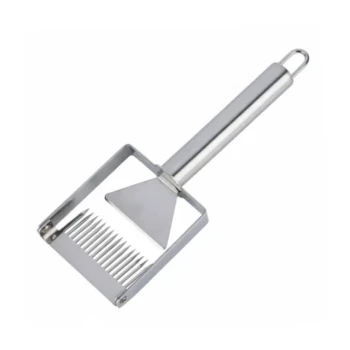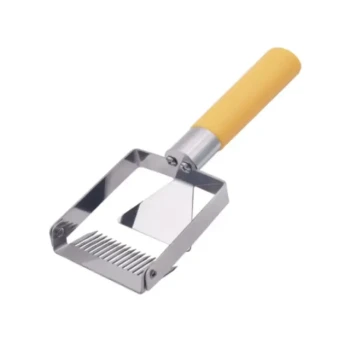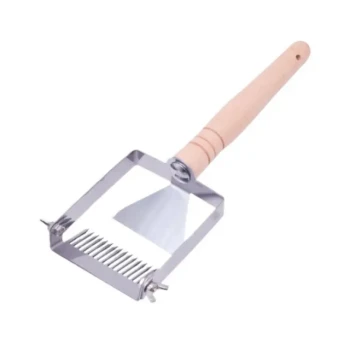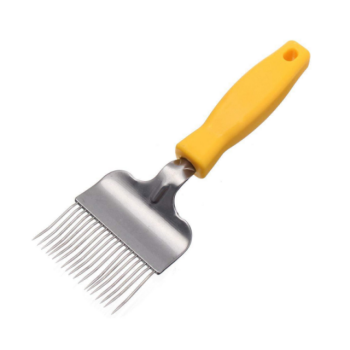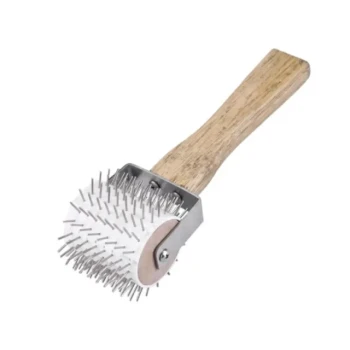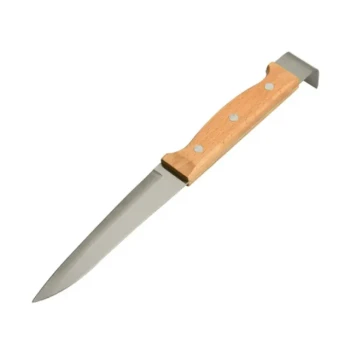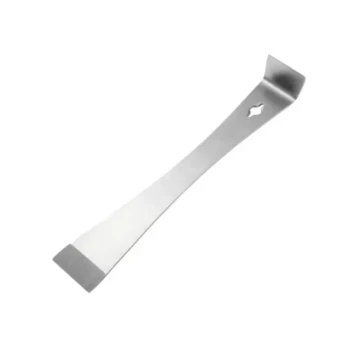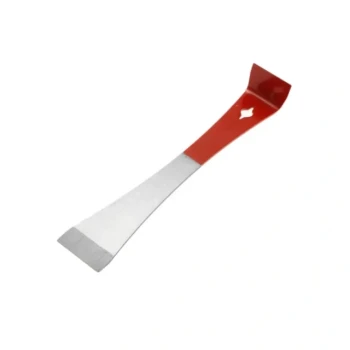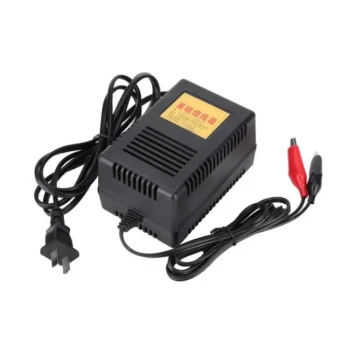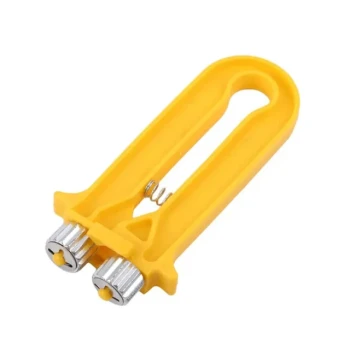In short, the primary benefits are speed and cleanliness. An electric uncapping knife uses a heated blade to melt through the beeswax cappings on a honey frame. This allows you to uncap frames significantly faster than with a cold knife and results in a much cleaner cut, leaving less wax debris to filter out of your final honey harvest.
The core advantage of an electric uncapping knife is not just speed, but the effortless efficiency it provides. The built-in heat does the hard work, transforming a physically demanding task into a smooth, simple process, especially when harvesting from multiple hives.
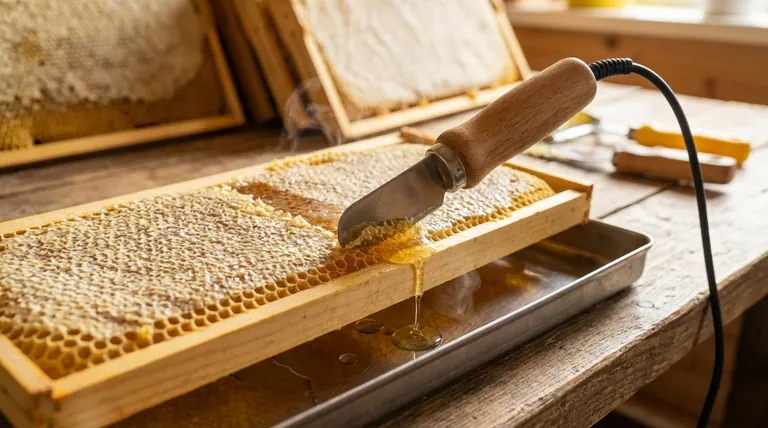
The Core Advantage: Effortless Heat
The defining feature of an electric knife is its heated blade. This single element is responsible for all of its main benefits over traditional, non-powered tools.
How Heat Simplifies the Cut
Unlike a cold knife that requires a "gentle sawing motion," a heated knife glides through the wax. The heat melts the cappings just ahead of the blade.
This eliminates the need for significant downward or sawing pressure. You simply guide the knife down the frame, letting its temperature do the work.
Increased Speed and Efficiency
The melting action is significantly faster than manually cutting with a cold blade. This efficiency becomes critical when you are processing more than a few frames.
For beekeepers with multiple hives, an electric knife can reduce uncapping time by more than half, streamlining the entire extraction day.
Achieving a Cleaner Cut
Because the blade melts the wax, it leaves behind a smooth, clean surface on the honeycomb.
This results in fewer wax fragments falling into the honey. A cleaner initial uncap means less time spent straining and filtering the honey later, improving the overall quality and clarity of the final product.
Understanding the Trade-offs
While highly effective, an electric knife is not without its considerations. Objectivity requires acknowledging its potential downsides compared to simpler tools.
The Need for a Power Source
The most obvious limitation is the requirement for electricity. This can be a challenge if you process your honey in a remote location or an outbuilding without a convenient power outlet.
Initial Cost and Complexity
An electric knife represents a higher initial investment than a simple cold knife, uncapping fork, or roller. It's a more complex tool that requires proper care and storage.
The Risk of Scorching
If the knife is too hot or held in one place for too long, it can potentially scorch the honey and wax. Most modern knives have thermostats to manage this, but it requires more attention than a simple cold tool.
Making the Right Choice for Your Harvest
Selecting the right uncapping tool depends entirely on the scale of your operation and your primary goal for the harvest.
- If your primary focus is speed and efficiency for many hives: The electric knife is the clear choice for maximizing your honey yield with minimal effort.
- If your primary focus is a minimal investment for one or two hives: A simple cold knife or an uncapping fork is a perfectly adequate and cost-effective solution.
- If your primary focus is working in a location without power: You must rely on manual tools like a cold knife, fork, or uncapping plane.
Choosing the right tool for your specific needs is the first step toward a smooth and successful honey harvest.
Summary Table:
| Benefit | Description |
|---|---|
| Effortless Cutting | Heated blade melts wax, requiring minimal pressure and no sawing motion. |
| Increased Speed | Cuts uncapping time by more than half, ideal for multiple hives. |
| Cleaner Harvest | Melts wax cleanly, leaving fewer fragments and reducing post-extraction filtering. |
Ready to upgrade your honey harvest with professional-grade efficiency?
For commercial apiaries and beekeeping equipment distributors, the right tools are critical for productivity and honey quality. HONESTBEE supplies durable, high-performance electric uncapping knives and a full range of beekeeping supplies through our wholesale-focused operations. Let us equip you for a smoother, more profitable season.
Contact HONESTBEE today to discuss your wholesale needs and discover our full catalog!
Visual Guide
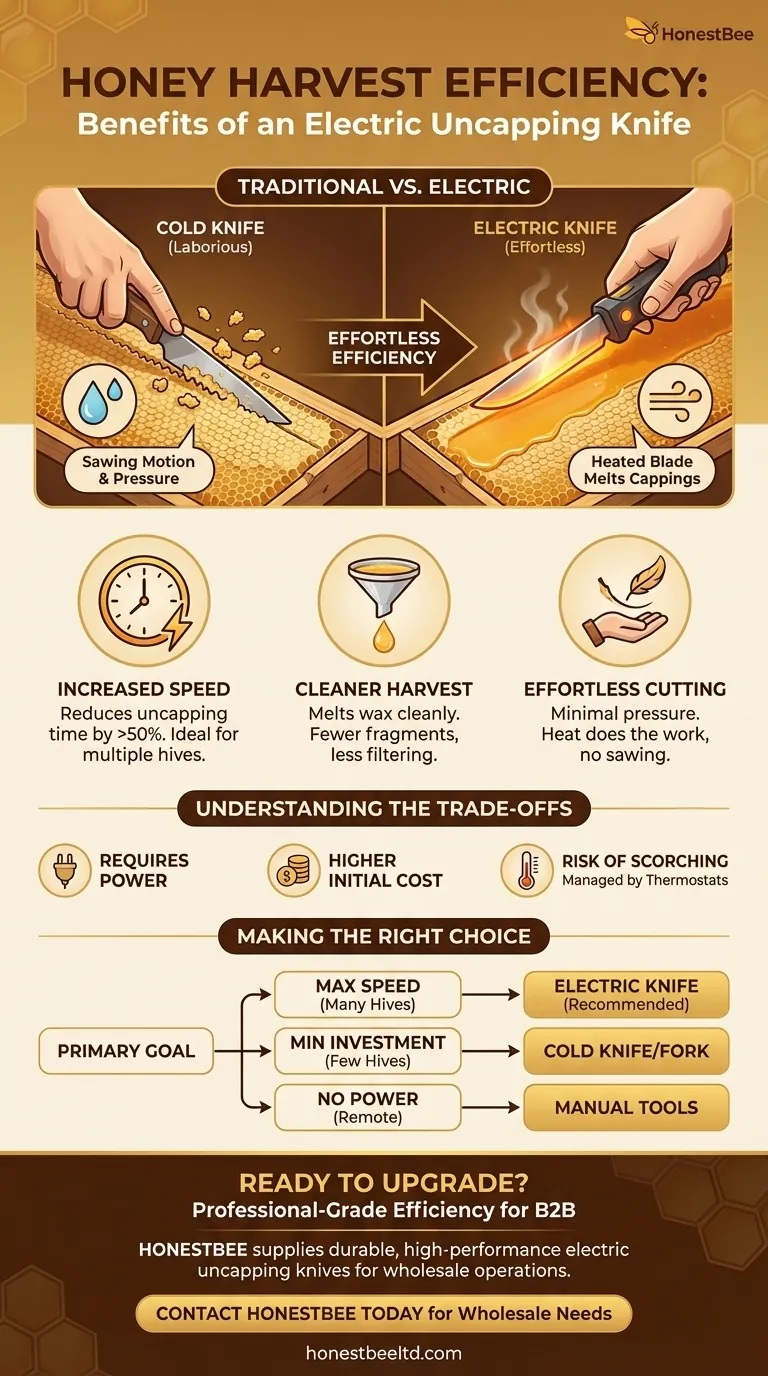
Related Products
- Stainless Steel Dual Blade Uncapping Plane
- Professional Stainless Steel Double-Sided Honey Uncapping Knife
- All-Stainless Steel Pivoting Honey Uncapping Fork for Beekeeping
- All Stainless Steel Double Sided Pivoting Honey Uncapping Fork
- Stainless Steel Pivoting Honey Uncapping Fork with Plastic Handle
People Also Ask
- What tools are available for uncapping honey? A Guide to Choosing the Right Tool for Your Operation
- What is an uncapping knife? Choose the Right Tool for Your Beekeeping Scale
- What is the overall recommendation for beginner beekeepers regarding uncapping tools? Master Your First Honey Harvest
- What is an uncapping knife used for? A Guide to Efficient Honey Harvesting
- What is an uncapping plane, and how does it differ from an electric knife? Precision vs. Speed for Beekeepers


